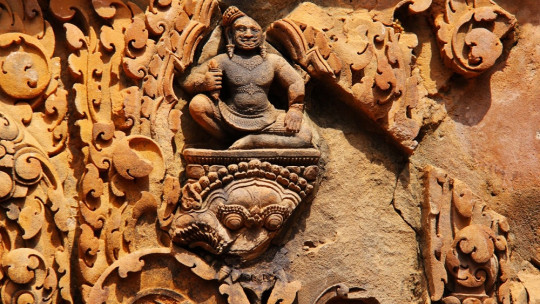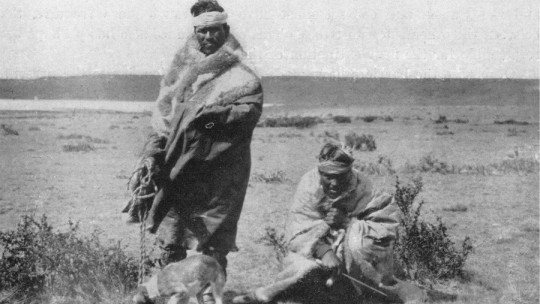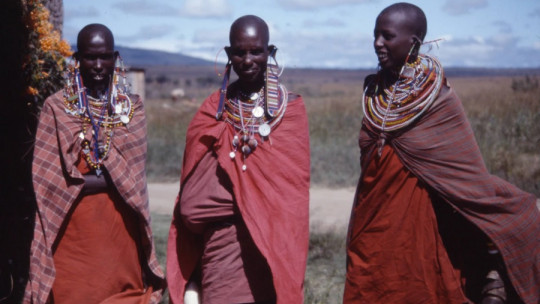
Cultural anthropology is a branch of anthropology because, like herself, she is very young and is still developing.
Understanding what other cultures are like has never been easy, especially considering that no one can separate themselves from their own culture to try to see other ethnic groups with the greatest objectivity.
Below we are going to go into more detail about the definition of this anthropological branch, in addition to talking about what it understands as culture, its development as a discipline and what its methodology is.
What is cultural anthropology?
Cultural anthropology is an anthropological branch which focuses on the study of human beings through their culture understood as the set of customs, myths, beliefs, norms and values that guide and regulate the behavior of a certain social group.
Cultural anthropology is based on the premise that human beings are social animals, which causes us to live in groups. In these groups, in which several individuals have contact, the individual visions of each one are shared, which is represented in their way of behaving and thinking. This, once shared and assimilated jointly by the group as a whole, makes up culture.
It should be noted that There are certain differences between cultural anthropology and social anthropology The latter places more emphasis on how a society is organized, that is, what its social structure is, while cultural anthropology focuses on culture, leaving aside how it can be socially organized.
Historical background and development of this discipline
Trying to understand what other cultures are like and what characteristics define them is something that has been done throughout history. However, the way it was done in the past was quite lax, and more than an interest in finding out what other ethnic groups are like, the real reason, on many occasions, was to ‘demonstrate’ how superior one’s own culture was. compared to others.
Among the first to be curious about people from other cultures we have the Greeks Among them we can highlight the figure of Herodotus (484-425 BC), who studied other peoples such as the Egyptians and the Scythians, a Eurasian people.
Several centuries later, in the Middle Ages there was a certain daring to explore beyond Europe. One of the most striking cases are the expeditions of the Italian Marco Polo, who served as a link between Western culture and Asian culture. In his writings he described countless peoples of the Far East, although not without leaving aside his own vision of the world.
However, It is from the 15th century onwards that the real boom in exploration occurs, both towards the new continent for Europeans, America, and to civilizations as ancient and at the same time as unknown as Cathay, current China, or Cipango, current Japan. These explorers, despite their great knowledge of the world, were not expert anthropologists (a discipline that did not yet exist) and they could not remove from their minds the undoubted bias they had in their perception of the world.
Regardless of the world they had managed to see, these travelers, missionaries, soldiers, settlers and others were still European people, which prevented them from having an objective vision of non-Western cultures.
Thus, the origins of cultural anthropology are somewhat obscure. Given the limitations in those centuries to move around the world, many scholars in the field were forced to rely on the testimonies of travelers, who, as we have already said, hardly saw the outside world objectively, reflecting their own stereotypes regarding the world. ethnic group with which they had established contact.
However, the solution began to take shape already at the beginning of the 20th century. Bronisław Malinowski, a Pole who is a fundamental figure in anthropology, carried out a series of works that represented a great change in the way in which cultural anthropology studied human beings. Unlike what had been done mostly until then, it was decided to investigate the towns by going to study them directly, through field work.
In this way, any interpretation made from, in turn, interpretations made by people not trained in the matter, such as the aforementioned case of missionaries and merchants, was avoided. Ethnographic fieldwork, studying directly the people you want to study, became the most widespread methodology.
Although almost a century has passed since Malinowski made his first works until now, and Cultural anthropology has evolved and changed many of its visions, especially related in the past to a colonialist perspective of everything that was not European, the efforts of the Polish anthropologist continue to have validity and impact today.
anthropological method
Cultural anthropology, along with social anthropology, uses participant observation as the best method to study the habits, traditions and other customs of a culture. In this way, the anthropologist obtains first-hand information about the ethnic group that is the object of his study. The researcher becomes familiar with the members of the culture he wants to study and, at the same time, these members also begin to accept the presence of the anthropologist and may even accept him as a new member.
By doing so, in addition to seeing first-hand how the members of that culture behave, the cultural anthropologist can understand what the functions of a certain practice are and what meaning it acquires in the place. That is, he allows understand the context through which a custom is carried out or why they have acquired a specific habit
The most effective way to achieve rigorous and exhaustive data collection is to do everything that the culture under study does, that is, “wherever you go, do what you see.” So that, The anthropologist must try strange foods, learn the language of the region, agree to perform the rituals of the area observe and participate in traditional games, and much more.
Participant observation is not an exclusively anthropological method. It is also present in other disciplines, such as psychology, sociology, human geography, political science, among others. What is notable about this method is that cultural anthropology has transformed it into the fundamental pillar of its identity as a human science.
What does anthropology understand by culture?
Unlike the concept most widespread in popular culture, anthropologists understand the concept of culture beyond the sphere of art and leisure.
Culture, anthropologically speaking, is a much broader concept. In fact, this concept has become increasingly more complex thanks to the findings that have been made in fields such as primatology, biology, neuroscience and other sciences related to nature, given that anthropology is not only nourished by concepts coming from the social and human sciences.
According to Edward B. Tylor (1832-1917), culture could be defined as all that knowledge, science, art, laws, morals, customs and other habits acquired by a human being as a member of a certain society.
According to Tylor, every culture evolved along a path that went from a “barbarian” state to “civilization.” It must be understood that classifying a given culture as barbarian today is something that implies a supremacist and Eurocentric vision, but at the time, and with the cultural bias that Tylor himself must have had, it was seen as an appropriate definition of the degree of cultural sophistication that a certain ethnic group could have.
Tylor himself maintained that the pinnacle of world civilization was England in the 19th century, a country of which he happened to be a citizen. In keeping with the supremacist vision of Middle Victorian English, England was the benchmark of advanced culture and, therefore, all other societies were inherently inferior.
This view was criticized by another anthropologist, Franz Boas (1858-1942), of German-American origin. He based his work on the German concept of ‘kultur’, a word cognate with the English term ‘culture’ and ‘cultura’ in Spanish. German kultur was understood as the set of behaviors and traditions, both local and personal, that an individual can manifest.
For Boas, cultures did not evolve linearly going from the least civilized to the most civilized, but a different degree of social complexity developed depending on the historical events that the ethnic group in question experienced and how it handled it.
Today, the definition of culture from cultural anthropology is closer to Boas’s idea: culture is an integrated system of symbols, values and ideas that must be studied as if it were an organic being.
Culture It can be divided into two different categories. The big culture, or big C, and the small culture, small c To better understand this differentiation, according to Boas, Argentine culture would be, for example, one of the large C type, while the traditions of the city of La Plata would be what is understood as small c.
Culture as second nature
Cultural anthropology proposes the idea that to understand human beings it is necessary to also know the environment in which they develop. The environment directly influences your way of being, both behaviorally and in terms of personality and intelligence
The culture of each ethnic group constitutes a kind of second nature. It is an environment in which certain patterns of behavior are allowed and There are certain social norms that must be followed by each of its members so that they can develop as subjects fully adjusted to the place they inhabit.
The human being, as he or she develops as a member of any group, assimilates and internalizes norms present in the place where he or she is, becoming something that is difficult to question and seen as logical.
Some aspects of this type are the ethics and morals present in that ethnic group that, in the eyes of other groups, may be seen as something very ridiculous, but the members of the group in question see it as something completely normal. This varies greatly depending on the historical period.








